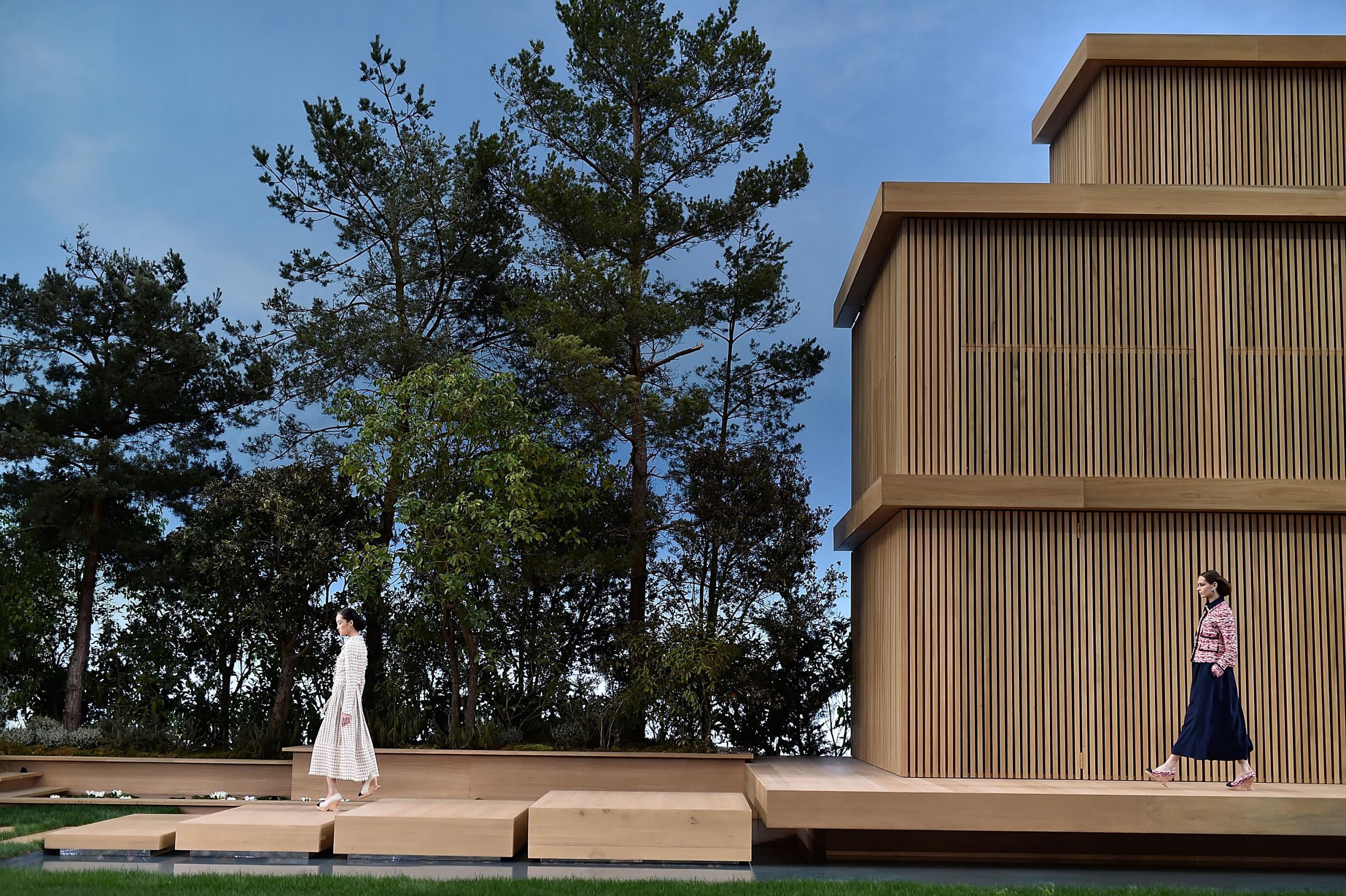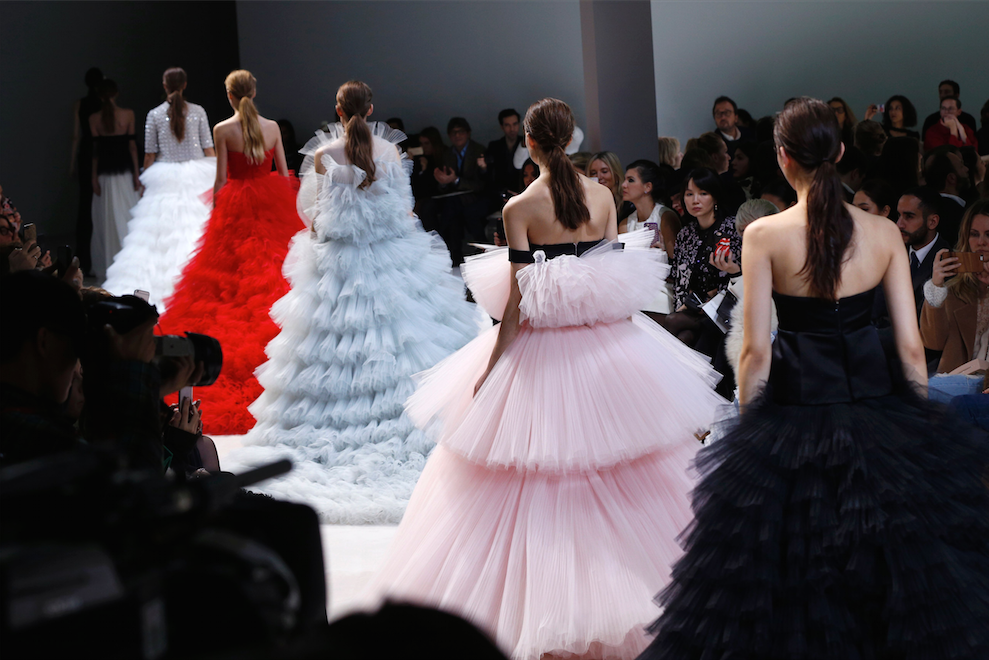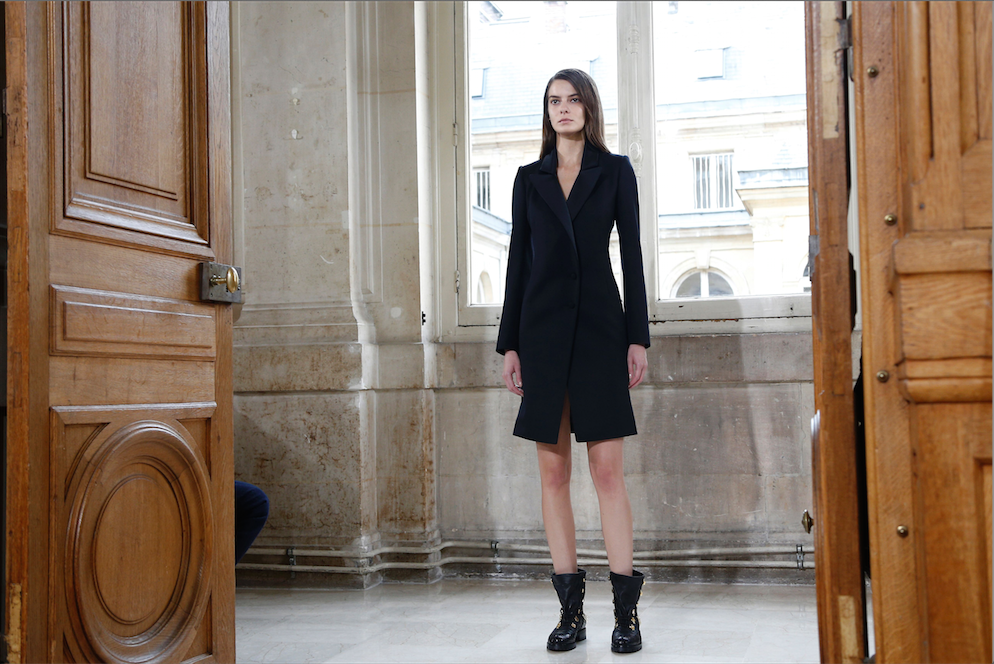Paris haute couture reviews: Chanel, Giambattista Valli, Armani Prive and Bouchra Jarrar
Alexander Fury reviews the spring/summer 2016 haute couture collections from Giambattista Valli, Armani Privé, Bouchra Jarrar and Karl Lagerfeld for Chanel

Your support helps us to tell the story
From reproductive rights to climate change to Big Tech, The Independent is on the ground when the story is developing. Whether it's investigating the financials of Elon Musk's pro-Trump PAC or producing our latest documentary, 'The A Word', which shines a light on the American women fighting for reproductive rights, we know how important it is to parse out the facts from the messaging.
At such a critical moment in US history, we need reporters on the ground. Your donation allows us to keep sending journalists to speak to both sides of the story.
The Independent is trusted by Americans across the entire political spectrum. And unlike many other quality news outlets, we choose not to lock Americans out of our reporting and analysis with paywalls. We believe quality journalism should be available to everyone, paid for by those who can afford it.
Your support makes all the difference.So Karl Lagerfeld erected a utopia inside a grand Paris exhibition hall: calm waters, wood-slat hut, evergreen lawn, suspiciously blue sky. At one point, Truman Show-style, a door cracked ajar in the background, the sky spliced by a grubby glimpse of raw concrete and snaking wires. Then a chisel-jawed Baptiste Giabiconi wandered out - a model Lagerfeld has used time and time again to open his Chanel haute couture shows, like this one. A recycled model, wearing jeans patchworked of recycled leather, and a recycled Chanel cardigan jacket. The front of the aforementioned hut slid open, and the models began to disgorge. They wore recycled Chanel too.
”Très écologique,” murmured Lagerfeld after his spring/summer 2016 Chanel haute couture show, wearing a look he’s recycled time and time again - high starched collar, skinny black suit. And, indeed, it was. Fashion is frequently ecological, in that it’s always recycling - its own past, as at Chanel. Sometimes its own present, as at other, less creative, fashion labels. Lagerfeld is unique in that he never references his own past. Rather, he recycles again and again Chanel’s life work, chewing them us and regurgitating in endlessly innovative formats. The notion this time was eco-couture - all the wood from the set would be recycled, we were unreliably informed. And the clothes themselves incorporated natural materials like wood, cork and hessian rope, embroidered in the shape of bees or birds, in a maquillage-hued palette of earthy beiges.
It’s not as glib as it may sound. The mood was zen, models moving slowly at a geta gait in high cork-soled shoes and chopstick-narrow pencil skirts topped with bulbous jackets with bold rounded shoulders. The eco-embellishment was subtle - you’d never clock that the trained wedding dress was about 50 per cent wood-shavings. And haute couture, stitched entirely by hand, is the least industrial and therefore potentially most ecological of all fashion areas. Each outfit is offer made-to-order only - no excess stock. Nothing is wasted.
Except of course, in these vast shows, choreographed like Hollywood epics, lit with klieg lights, with a cast of thousands and a carbon footprint roughly equivalent to a few round-the-world trips on a private jet. Like the ones Lagerfeld uses.
Is it shallow for fashion to think about the world outside, even as it’s erecting micro-climates to insulate clients and press from reality as they showcase their wares? No. It’s commendable. For the first time on record, temperatures were about 1 degree Celsius above the pre-industrial era in 2015, according to the United Nations World Meteorological Organization (WMO). When Chanel staged their pre-Fall show in Rome in December, there were still leaves on the trees; now, the east coast of the United States is buried under several feet of snow. Some things are bigger than fashion - and, moreover, they impact it.
It was telling that Lagerfeld’s idyl was a permanent, temperate summer. That’s the environment favored by the 0.01% who can buy haute couture, and who will be drawn to Chanel’s latest wears, with their classic styles, their preternaturally slender silhouettes stretched with fabric the color of fresh, babyish, surgically-enhanced skin. At the end, the stacked-up, triple-tier wooden hut - half super sized Chanel sauna, half Ikea flat-pack - slid open like a bunch of fancy garage doors, revealing a pile-up of couture-clad models and Lagerfeld. Then the doors closed, and you saw not the wood shavings nor the cork fragments, but the sequins and rhinestones glittering behind the slats. Eco, fine. But more couture.
The world of Giambattista Valli’s clients is vast. Apparently. It certainly requires, it seems, vast clothes to fill it. Vast skirts, vast sleeves, vast amounts of ruffles that take a vast amount of time to apply to every conceivable surface.

Someone murmured to me, admiringly, how well made it all looked. Maybe she wasn’t looking hard enough. Valli’s couture often gives the effect of a Monet painting, meaning that, from far away, it’s pretty; but up close it lacks precision. Certainly the precision that characterises haute couture, elevating it above fancy ready-to-wear with bigger skirts than normal. Valli loves frothing out a tulle skirt, like the ladies who perch atop toilet tissue rolls in unfashionable suburban second bathrooms. It’s pretty, but predictable. Pedestrian. Pointless.
Opposite me, a woman - pursed lips, lifted eyes, hair ferociously backcombed, dressed in Giamba, jambes out - clapped hard, circled outfits. She’s a Valli doll. And I understand that her wardrobe needs are satisfied by this collection, which I ultimately found unsatisfying, save for a narrow black dress with pristine white gloves, and a dead-straight silver coat dipped in glitter, that seemed applicable to a life more ordinary.
Do couture clients have ordinary lives though? Or is that a fruitless search for the simple purity of a needle in a great, golden, Lesage-embroidered haystack?
All couture isn’t about excess. Bouchra Jarrar is the new name doing stripped-back, pared-down tailoring; Giorgio Armani is the old. He dubs his line Privé because it’s a private affair. A Privé pleasure. Some of Armani’s couture clothes are flashy - bugle beaded and sequined evening dresses, clusters of crystal, diamanté pop-socks - but on the whole, they’re restrained. Dignified. This show was filled with waves - undulating hemlines, bubbly organza, kinked Flapper hair - but it won’t make any. It will make sales, though, of the few flawlessly-cut black suits (there could have been more) and the very many mauve evening gowns, the collection’s key, and only, hue. Mr Armani loves a single shade show. This was subtly done.

Subtle is Jarrar’s thing. Her style is built around coats, short jackets, wide trousers. Decoration is subtly keyed. But back to that needle - search no more. The craft may not claw out your eyes for attention, but Jarrar’s garments are flawlessly realised. Her fit is second to none. The samples for her hand-woven tweeds are loomed by Jarrar herself. She's picked up threads and shown them to me as reference for the cloth she is yet to make. Her atelier team is minute, too, which makes their output even more extraordinary. Not least because, beyond the cobbledy-crafting, her youthful, relevant clothes feel so perfectly keyed to a life more ordinary. Bouchra Jarrar manages to make couture feel relevant to the real world - that world others are obsessed with as an intellectual conceit, rather than an actuality. That's important, and helps to tug haute couture out of its metaphoric Marie Antoinette ghetto and back onto the street. It's ensuring that we can relate to haute couture it as garments to be worn, rather than breathlessly admired in a museum vitrine.
Join our commenting forum
Join thought-provoking conversations, follow other Independent readers and see their replies
Comments